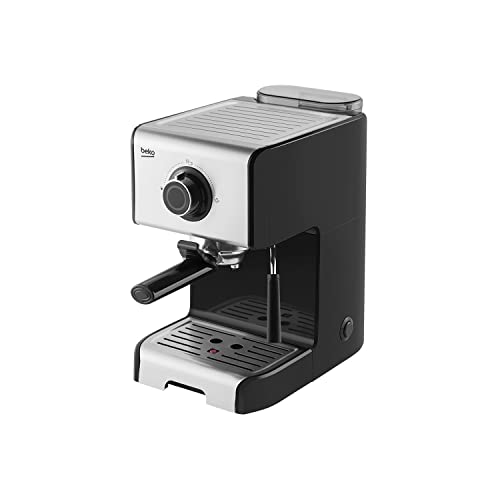How to Make Espresso Machine Coffee
Espresso machines can make delicious cups, however they require more maintenance and setup than a regular coffee maker. You must also grind and tamp the beans by yourself.
Pressure is the most important factor in making espresso. The way an espresso machine operates is that an heating vessel heats water to the perfect temperature, then it forces it out of the spouts, and then through the grounds.
Temperature
Espresso is made by forcing hot water, under pressure, through finely ground coffee beans. The temperature of the water is essential to the quality of the final shot. Insufficient temperatures can result in the under extraction of essential flavor compounds. Temperatures that are too high can result in over extraction, which may cause bitter or burned taste.
The ideal temperature range for espresso is between 195 and 205 degF. This temperature is achieved by using a group head made to maintain stability and a consistent temperature throughout the brewing process. The E61 is the most sought-after group head as it comes with temperature stability, pre-infusion capability and lever control.
It is crucial to take into account the temperature when adjusting your espresso machine for different roasts or brew ratios. This can impact the extraction yield as well as the crema. The ideal temperature will vary depending on the roast and bean. However the general rule is that lighter roasts with higher brew rates require higher temperatures. Additionally, a high thermocouple of good quality is essential to maintaining a consistent temperature.
Pressure
During the brewing process espresso machine coffee is pressure-pushed through finely ground and tamped grounds. This triggers chemical reactions which extract flavors, oils and other soluble ingredients from the beans. The resultant beverage is usually more flavorful and richer.
The ideal espresso machine's pressure is nine bars of pressure, that's the same as the atmospheric pressure at sea level. This is because it's at this pressure that the espresso bean's soluble compounds are most easily extracted.
However, some espresso machines may advertise 15 or 20 bars of pressure. While these machines are able to reach these pressure levels however, they might not be able to maintain the same pressure throughout the extraction.
One bar of pressure is equal to 32 pounds per square inch (PSI) of a car's tire. It's more than four-times the pressure that a professional cyclist needs to pump their bicycle tires. The ability to control espresso machine's pressure, and to make consistent espressos is the key to any serious home barista.
Water
Water is the most important ingredient in a great cup of espresso. The right water can allow your beans to reach their full potential, while the wrong water can cause problems like clogged pipes or even harm your expensive espresso machine.
For the best extraction of espresso You should select an organic spring with a high mineral content. This water will enhance the taste of your espresso without the mineral chalky trace found in tap or bottled waters. This is an excellent alternative to distilled water or reverse osmosis. This process can be too purified and cause problems with flavor.
It is not recommended to make use of a water filtration system that removes excessive mineral content from your tap water. click through the up coming website can result in flavor and extraction problems. Get a water test kit to determine the average hardness of the water you drink in your area. This can be used to identify an filtration system that can provide the proper specifications for the water in your espresso machine.
Beans
Most coffee lovers tend to be extremely involved in the entire process of making espresso. They obsess over a variety of variables, such as temperature, pressure in the water and viscosity. If one of the variables is slightly off, the whole shot might taste bad.

The most important element when it comes to espresso is the beans used. Many believe that only certain varieties are suitable for espresso. Although certain beans are appropriate for certain purposes however, any coffee bean that has been roasted can be used to make espresso. The difference between espresso beans and regular coffee beans is that espresso beans are roast for longer and tipycally over the second crack that gives them their darker appearance and makes them more soluble in water.
Dark or medium roasted beans are the best choice for espresso as they give the shots a richness and a boldness. However, it's possible to make excellent espresso using light roast beans, especially if the beans are preground (for convenience in an espresso machine).
Milk
Espresso and milk is a timeless combination. The combination of milk and espresso is an old-fashioned. Not only does it improve energy levels but it also helps balance the bitterness of the espresso. There are few culinary pairings more perfect than this one!
If you decide to get an espresso machine that is able to make cappuccino or lattes make sure you look at how easy it is to use. The best espresso machines have a jug that can be filled with cold or hot milk along with a steam wand and a portafilter for pulling the shot. Some models include a built in grinder, tamper, and frother.
To eliminate any condensed water, the steam wand must be cleaned every day prior to use (or after every cup of espresso). This process will take around 30 seconds and is crucial to keep your machine operating smoothly. If you don't purge the system, it could cause a bitter taste and/or a accumulation of bacteria that could alter the taste or odor of your beverage. It's simple to do and should form part of your regular maintenance routine.
